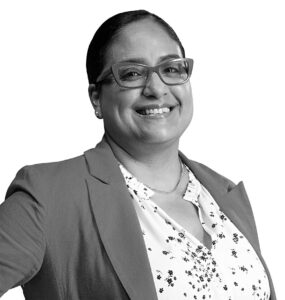
Health information brought to you by
Blue Cross Blue Shield of Massachusetts
“What? … Type 2 diabetes … But I feel fine!” – Anthony Anderson
These are the words of comedian and Emmy award winning actor Anthony Anderson heard after being diagnosed with Type 2 diabetes. The star of ABC’s award-winning TV series “black.ish” said that having Type 2 diabetes is no laughing matter. Since being diagnosed with it over 15 years ago, Anderson has taken his advocacy role seriously. As spokesman for the diabetes awareness campaign “Get Real with Diabetes,” he thought he could handle his disease on his own … “that one day it was going to just reverse itself, I didn’t want to get real.” The death of his father, who died from complications of Type 2 diabetes, a preventable and treatable condition, is what motivated Anthony to step up and speak out about it. He was profoundly affected by his father’s death, leading him to embrace life and prioritize being present to see his family grow and prosper.
What is diabetes?
Diabetes is a chronic or lifelong disease where the body has trouble effectively converting the food you eat into the fuel or glucose needed to run your body. According to the Centers for Disease Control and Prevention (CDC), about 38.4 million, or 11.6% of people in the U.S., live with diabetes, making it a common chronic health issue. The Office of Minority Health, a division of the U.S. Department of Health and Human Services, found that African Americans or Blacks die from complications of diabetes at twice the rate of non-Hispanic whites.
Types of Diabetes
Not preventable but treatable:
• Type 1 diabetes affects approximately 1.8 million people in U.S. It is an autoimmune response where the body attacks itself and stops making insulin, resulting in the need for the individual to take insulin for life. This type of diabetes is often diagnosed in children and young adults; however, one can be diagnosed at any time. While it cannot be prevented, it can be managed and treated effectively.
• Gestational diabetes develops in pregnant women who never had diabetes. Gestational diabetes can place both the mother and child at higher risk for health complications. This condition usually resolves after the child is born. However, having it puts the mother at a higher risk for Type 2 diabetes later in life. This occurs in between 5-10% of pregnancies.
Preventable and treatable:
• Type 2 diabetes accounts for an estimated 90-95% of all cases of diabetes, affecting approximately 37 million people in the U.S. While the body can produce insulin, it may not always produce enough insulin or use it properly. This inconsistency leaves higher levels of blood sugar (glucose) in your body which is damaging to the body over time. It can cause other conditions like heart disease, kidney disease and vision loss. Type 2 diabetes is most prevalent in people age 45 and older, however, children and young people are also susceptible.
• Prediabetes is a reversible condition, but it serves as a wakeup call to take action to prevent diabetes from onsetting. In the U.S., according to the CDC, 97.6 million people, or 1 in 3 adults, have prediabetes, a condition where you have higher than normal blood sugar levels but not high enough to be diagnosed with diabetes. More than 80% of people with prediabetes don’t know they have it because they have not been tested.
Dr. Benjamin Kruskal, a practicing physician and medical director for Blue Cross stated, “Most patients that have diabetes often report some of the following common types of symptoms: frequent urination, increased thirst, fatigue and unintended weight loss.”
Risk Factors for Type 2 Diabetes
• Overweight or obese 90% of people newly diagnosed with Type 2 diabetes are diagnosed with being overweight or obese.
• Age The prevalence of Type 2 diabetes is highest in adults aged 65 and older.
• Sedentary lifestyle Inactive lifestyles can result in weight gain, leaving you prone not only to diabetes but also heart disease, high blood pressure, depression and anxiety, or even chronic liver disease.
• Genetics Having a family member who has Type 2 diabetes increases your risk of coming down with the disease.
• Gestational diabetes Being diagnosed with the condition and giving birth to a baby weighing over 9 pounds may result in Type 2 diabetes later in life.
• Higher-Risk ethnic groups Some populations are more prone to having diabetes than others, such as Native Americans (14.6%), African Americans/Blacks (12.1%), Hispanics (11.7%) and Asian Americans (9.1%).
Why you should get screened
Prediabetes or diabetes is only confirmed through bloodwork, regardless of the symptoms you may experience. Make sure to ask your primary care provider or local clinic to check your blood sugar level. Your provider will review your lab results with you and determine if you need any additional testing or to take specific action.
If it’s determined that you do have prediabetes or diabetes, your provider may suggest that you consult with specialists who will support your journey. These specialists include but are not limited to an endocrinologist, registered dietician, ophthalmologist, podiatrist, audiologist, or dentist. Regular check-ups for preventative care are essential, especially the care of your eyes, feet and teeth due to susceptibility to vision loss, nerve damage, and gum disease. The right care team will set you up for diabetic management success. Look for care team members that respect and align with your cultural and religious traditions.
Managing Prediabetes and Diabetes:
Simple lifestyle changes can help
If your lab results indicate that you do have prediabetes or diabetes, here are some suggestions that may be recommended to you:
• Eat a healthy diet — This will not only help you maintain a healthy weight, but making smarter food choices is better for your body. Choose a variety of fresh fruits, vegetables, and lean proteins while staying away from processed fatty foods.
• Exercise — Keep active for at least 30 minutes three times a week.
This will lower your blood glucose and your A1C. Before starting any
exercise program, be sure to check with your provider.
• Manage stress — Aside from keeping active, one way to manage stress is to stay connected to friends and family who support your new lifestyle changes. Be sure to get adequate and restful sleep.
Be sure to check your health insurance to review what benefits are available to you. Fitness and weight loss reimbursements are available on most health insurance plans. If you are diagnosed with Type 2 diabetes, it is possible to reverse it so long as you are supervised by a doctor. Blue Cross members with Type 2 diabetes have access to a diabetes reversal program which includes doctor supervision, at no additional cost.
Diabetes is just one chronic illness of many that disproportionately afflicts Black and brown communities due to systemic inequities.
Blue Cross is working hard to understand the root causes of disparities in diabetes and other health conditions and acting right now to reduce these.
A Call to Action
Mismanaged diabetes or untreated diabetes creates complications such as heart disease and strokes. According to the American Heart Association, over 50% of African Americans/Blacks have some form of cardiovascular disease. These numbers, while sobering, have energized many health equity leaders to change how they structure reaching out to communities in need of change.
Blue Cross works with partner providers such as the Equity Action Community, (EAC), using Blue Cross’ Magnolia Model™ framework, a method that identifies inequities in health care, with the goal of eliminating them. Carmen Pimentel, senior program manager of health equity programs at Blue Cross, reinforced the importance of her work with the EAC to share best practices, accelerate progress towards closing clinical equity gaps and improving equity via systems level change with an eye on reducing the rate of this disease. Carmen reiterates, “It takes a village to drive change and make an impact on diabetes and other chronic illnesses. I believe our partner providers and the Equity Action Community is needed to move the needle on health inequities.”
Health equity champions like Blue Cross, health advocates like Anthony Anderson, and a team of care specialists are working on your behalf to raise awareness of prediabetes and diabetes within communities of color. Sadly, Anthony Anderson could not save his father from the complications of diabetes but is doing everything he can to spread the word about staying healthy and managing this chronic disease.













